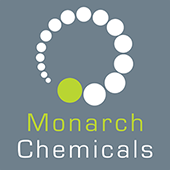Throughout the history of film, the line between reality and fantasy has always been blurred, thanks in no small part to the captivating artistry of special effects makeup. Since the earliest days of filmmaking, makeup artists have been pushing the boundaries of creativity, often navigating a treacherous terrain of questionable materials to achieve awe-inspiring transformations. Over time, their relentless pursuit of excellence has driven remarkable breakthroughs in chemistry and science, leading to the creation of some of the most iconic and memorable characters in cinematic history.
In this article we explore how the use of special effects and makeup has evolved from its early origins to today’s cutting-edge innovations.
Questionable Beginnings:
In the nascent years of cinema, the use of makeup for special effects was a brave new frontier, but the materials used were often crude and, at times, hazardous. For instance, early makeup artists would concoct skin-altering mixtures using toxic substances like lead and mercury, unaware of the health risks involved. In the 1931 classic "Frankenstein," actor Boris Karloff underwent a transformation into the iconic monster, with layers of makeup containing chemicals that would make today's makeup artists cringe. And in the bizarre and surreal 1939 Wizard of Oz world the snow was made from asbestos and the tin man was covered in aluminium dust which led to him being hospitalised just nine days into filming!
Innovations in Chemistry:
Fortunately for the actors, as the film industry matured, so did the science behind special effects makeup. Breakthroughs in chemistry and materials science began to revolutionise the industry. One notable example is the development of foam latex in the 1930s, which allowed for more lifelike and flexible prosthetics. This innovation paved the way for the transformation of Lon Chaney Jr. into "The Wolf Man" in 1941, creating a character whose appearance is etched into cinematic history.
The Silicone Revolution:
Perhaps one of the most significant leaps in special effects makeup came with the introduction of silicone in the 1970s. Silicone prosthetics provided unparalleled realism, comfort, and durability for actors. Silicone based Sculpt Gel is still used to this very day helping to create cuts, scars, gunshot wounds and flesh trauma without restricting an actor’s movement or facial expressions.
The Chemistry of Fake Blood:
Did you know that in Alfred Hitchcock’s 1960 horror ‘Psycho’ he chose to use watered down chocolate syrup for the famous shower scene? He believed at the time the contrast worked a lot better to suit the black and white medium of the film compared to conventional fake blood substances. This wasn’t the only time foodstuff was used as a fake blood substitute. In the 1996 cult teen horror ‘Scream’ they used corn syrup mixed with red food dye to produce the almost 200 litres of blood used during the film. (Just for reference the average human has around 5Litres of blood circulating throughout their system so that is quite the body count!). Of course, today, CGI can be used to place blood onto a scene post-production but as Quentin Taratino said, when talking about the fake blood used in Kill Bill Vol.1 “That looks good, but it looks like a computer did it ... I'd rather have it look good and look like a cool '70s thing.” (sic). Essentially, blood edited in post-production doesn’t quite have the same authenticity as live-action blood splatter. It doesn’t have to be realistic; it needs to be stylistic and add depth, atmosphere and shock to the scene.
Chemicals used in shop brought fake blood:
With Halloween creeping up, sales in fake blood begin ramping up but what is in the red, sticky liquid we put on our faces and decorations?
Aqua: As with most cosmetic and personal care products the first ingredient listed is water which acts as a solvent to dissolve and hold together all the ingredients in the mixture.
Potassium Hydroxide: Also known as ‘caustic potash ’ this chemical is used in small amounts to control and balance pH levels of the product.
Sodium Benzoate: Known also as food additive E211, sodium benzoate is added to preserve the solution and prevent the growth of bacteria and mould.
Xanthan Gum: This is a thickening agent used to create a more viscous, slower moving solution.
Colours and dyes: A red azo dye such as CI 16035 (FD&C Red 40) and CI 42090 (FD&C Blue 1) are commonly found in most industrially produced fake blood ingredients. These dyes are usually also found in other products such as bath bombs, soaps, hair dyes and food and drink products.
If skin irritation is a concern fake blood can also be easily created at home using just a few food safe ingredients: Cornflour, cherry juice or water, glucose syrup and food dye (red and blue). All you need to do is add more or less of the syrup and cornflour depending on the consistency you’re aiming for.
Theatrical smoke and fog:
Theatre fog is often used to create a dramatic atmosphere on stage. From a graveyard to a mad scientist’s lab these effects can be easily achieved with either a fog machine or dry ice.
A fog machine is the most common method of achieving these effects which uses a motorised machine containing a heating element and a special fog fluid. This liquid, which is poured into the machine’s reservoir, is a mixture of water and glycol or glycerine . When activated it passes through the machine to the heating element which vaporises the fluid, turning it into a thick dense fog or mist (similar to how a vape works).
In the world of makeup and special effects, the captivating marriage of chemistry and creativity stands as a testament to human ingenuity. From the intricate art of makeup to the mesmerising realm of special effects, chemistry plays a pivotal role in the creation of unforgettable characters, otherworldly creatures, and breath-taking illusions.

